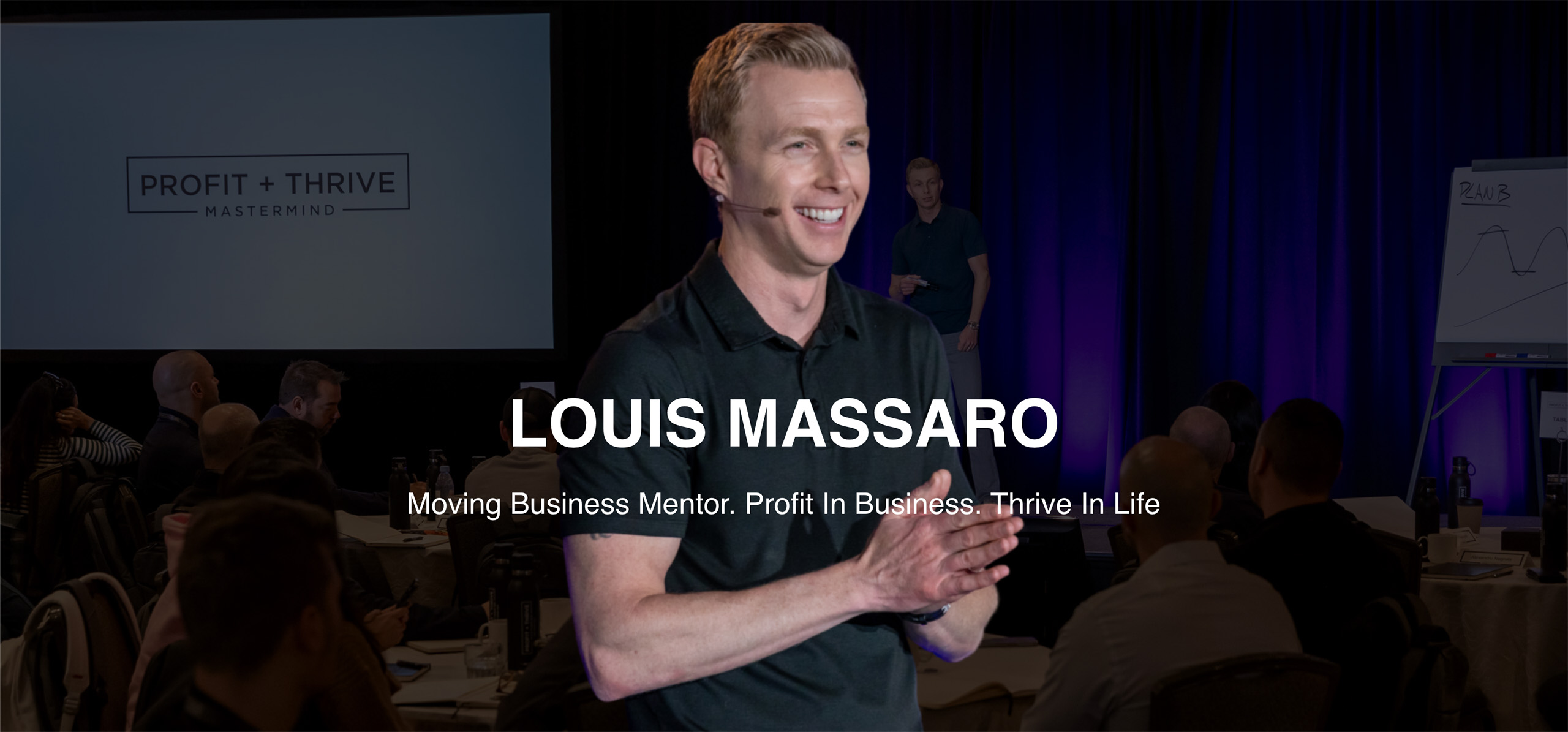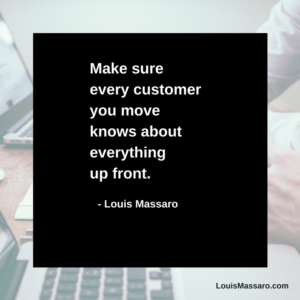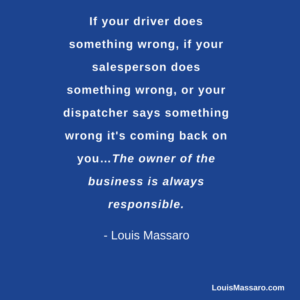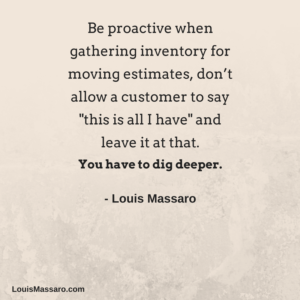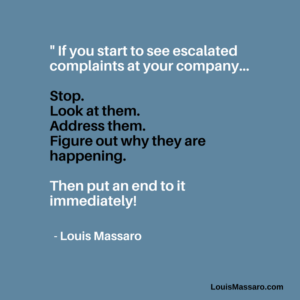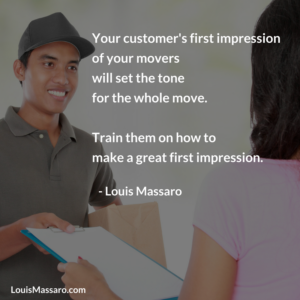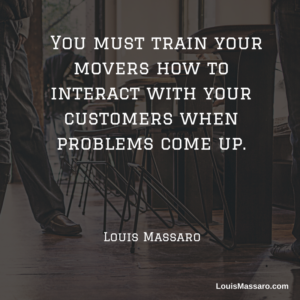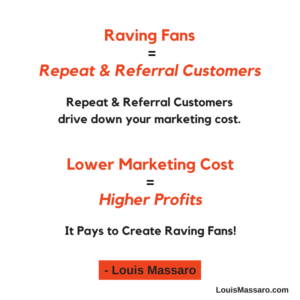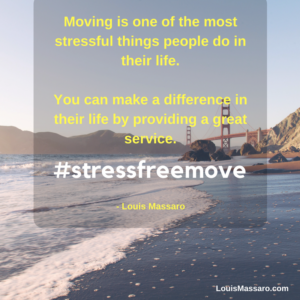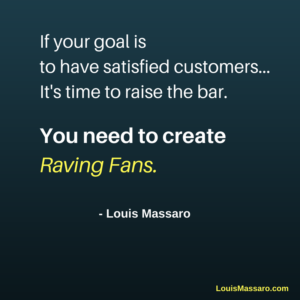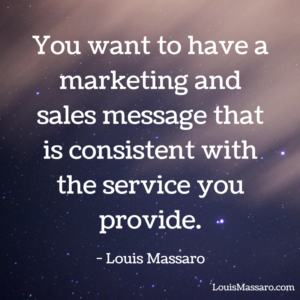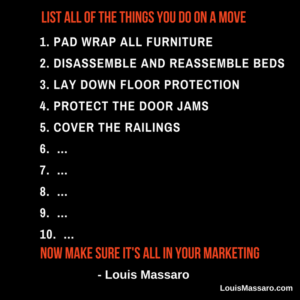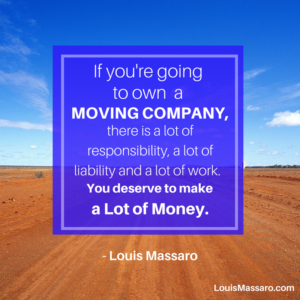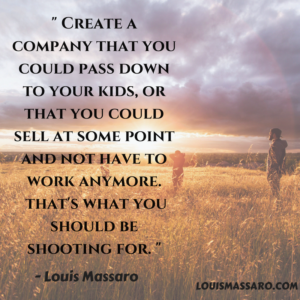By creating the Awareness Board for my company it allowed us to keep any customer that was not 100% satisfied with their move on our radar. Instead of being reactive to phone calls and complaints, we identified customers that had an issue on the move and then worked to get it resolved. Each issue was put on the awareness board to make sure that it was not out of sight out of mind.
We started with an Excel spreadsheet (download the awareness board for free) which we kept on a TV on the wall in the office. Then we started using a software called Zendesk to manage any customer service issues. If you go that route, you will need to configure the software to meet your needs, it does not come ready out of the box. You can use a whiteboard or even keep a list of potential issues in the notes of your phone. The idea is that you keep them visible and you are aware of them.
Create an environment that your awareness board can be effective in.
- Have a meeting with your staff – Let your staff know that you want to know about any customer that is not 100% happy with their move. You need everyone involved in order to discover any unsatisfied customers so that you can work to resolve the issue.
- Create open lines of communication – Make sure that you have access to any incoming calls or emails where customers can be informing you of their dissatisfaction. Make sure someone in your company is on top of fielding these calls and emails.
- Get the customer on the awareness board – The idea of the awareness board is to have it visible so that everyone knows that there are issues that need to be resolved. The minute you or someone on your team finds out about a potential problem, get it on the awareness board.
- Don’t shoot the messenger – You want to create an environment where your staff is not scared to tell you about issues. You have to be very careful not to “shoot the messenger” and get upset with the person bringing the information to you.
- Resolve the complaints – Work as quickly as possible to resolve the complaints. Just because a customer had a complaint, does not mean you can’t resolve it and turn them into a raving fan. Be responsive and prompt in resolving the issues.
There is nothing worse than thinking everything went well on a move and then you get a negative review. Stay aware of the issues and be proactive in resolving them.
[rad_rapidology_inline optin_id=”optin_6″]
Watch the video above for the full episode.
Like this episode? Please share it! My blog and videos are ad-free ONLY because you share my work!
How can I help? What challenges are you facing in your business? What areas could you use some tips in?
Leave me a comment below and I will be more than happy to get back to you or post a video on the topic.
Follow Louis on Instagram for tons of great quotes.



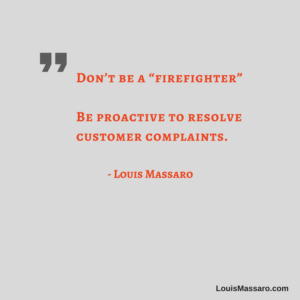
Full Transcript
[The following is the full transcript of this episode.]
Hey, my friend. It’s Louis Massaro, CEO of Moving Mastery and founder of Moving Sales Academy. Today, I wanna talk about awareness. Having awareness of all of your customers and the status of the move and if everything went good, if it didn’t go good, are they happy, are they not happy, is something that’s really important because you don’t wanna be in a situation where all of a sudden you think everything’s fine and you get a negative online review. You think everything’s fine and you get a Better Business Bureau complaint. You wanna have awareness of these problems and there’s some things you could do and set up to make sure that that happens. So, maybe right now you’re a little bit out of touch with customer service and you have somebody in your company that might be dealing with any customer complaints or issues to resolve them, and maybe you only hear about ’em when they get escalated, or maybe you’re dealing with each and every one of ’em as they happen. The idea is that you need to be aware of any customer that is not 100% happy. Don’t look at it as only if it’s a problem, only if they’re complaining am I gonna be worried about it and concerned about it. You should be worried and concerned about any customer that’s not 100% happy. ??????
Number one, you wanna create raving fans. You wanna get repeat referral business and you want five star reviews, period. That’s gonna help grow your business at tremendous levels. What you don’t want is you don’t wanna be in a position where all of a sudden, negative review. And you had no idea that there was even an issue with the job. So, I wanna talk to you about something that I put in place years ago in my business. It’s called an awareness board. An awareness board is basically a way to keep track of any customer that you’ve already moved that’s not 100% satisfied with their move. Anyone that might have an issue, you need to have it up on the wall. You need to have it visible for you and your team to see so that you could work to resolve these issues. Because if you don’t work to resolve them, they’re just gonna come and bite you from behind unexpectedly. You’re either gonna get a… Like we talked about, you’re gonna have a BBB complaint, a negative online review. They’re gonna charge back their credit card.
You have to be aware of ’em so that you could resolve ’em. And for me, when I came up with the awareness board, I had already had a team of people that were handling any customer issues. They knew how to resolve ’em. They knew how to walk ’em through the customer complaint resolution form and just go through the steps, step-by-step on what to do to get their issue handled and make them happy. But I needed to know what was going on. I needed a way to see any issue that could possibly be a problem. To make sure we were resolving it. So what we did at first was created a Excel spreadsheet, and I called it the awareness board. I put it up on the wall on a flat screen TV in the office, and basically it listed every customer that was not 100% happy, what their complaint or issue is, and the status, what we were doing to resolve it.
We later then started using a software called Zendesk. I’ll put the link below, which if you do get, it needs to be configured. It’s not ready to go out of the box. But we basically took the Excel spreadsheet that I’m gonna go ahead and give you, by the way, in the download down below. You’ll be able to download it or if it’s not in the link down below, go to louismassaro.com/awarenessboard and I’ll go ahead and attach it there to where you can download it and use it in your company. Once you download it, you’ll have it. I won’t be able to see anything. But basically, we took that Excel spreadsheet and had Zendesk recreate it so that we had a software to make sure that we were resolving issues quickly.
At the time we were doing 12,000 moves a year and there was customer service issues. I had 10 people in customer service and I needed to make sure that we had a system for staying on top of everything. So, even if you’re doing 20, 30, 40, 50 moves a month, you need to be on top of it. So even if it’s a whiteboard, even if it’s a list that you keep in your phone, if you’re a one-man show, keep a list of customers that aren’t 100% happy because if you don’t, you forget about ’em. If you don’t, you only address them when they call with their complaint or when the review shows up. So by having it in your face, it reminds you. These are issues that need to be resolved.
A lot of times we focus solely on booking moves, booking moves, booking moves, service and moves, service and moves, service and moves. We need to remember that after the move is serviced, you need happy customers. You need raving fans. And a lot of times, there might be a really small issue that if you’re on top of it, you can turn it around and create a raving fan. So, first thing you’re gonna wanna do is create a system and an environment within your company where the complaints make their way to where they can get on the awareness board. And what I mean by that is sometimes, I’ve worked with companies and there’s an environment where the problems get swept under the rug. The owner doesn’t really wanna know about ’em, there’s no real process for walking them through a resolution and it’s more of firefighting. It’s more of as complaints pop up, they’re putting out the fire, the customer seemed somewhat satisfied so they hang up the call, and don’t really do anything with it, again, unless they call back.
You have to create an environment where everything comes to the surface. So the first thing you wanna do is have a meeting with your staff and say, “Listen, I wanna start creating raving fans and I need to know every customer that’s not 100% happy. We’re gonna start using an awareness board how ever you wanna go about using it. But we’re gonna have an awareness board and we’re all gonna be aware of every customer that’s not one 100% happy so that we could work to make sure we get it resolved.” Create open lines of communication. Make sure that any customer that calls on a certain number that has an issue, whoever’s answering those lines knows that it needs to go on the awareness board. So, just having the awareness board doesn’t do anything for you. Your staff needs to know, “Hey, I got a customer that’s not 100% happy, let’s put ’em on the board.” Don’t look at it as a negative thing. Don’t look at it as a bad thing to find these customers because by putting ’em on the board, that’s the first step to getting it resolved.
What you don’t wanna do is you don’t wanna shoot the messenger either. So you wanna create an environment where your employees feel safe to bring this issue to you or to whoever’s gonna be getting things on the awareness board to where, if they speak to somebody, if your sales rep gets a call back from a customer and the customer says, “Hey listen, I just wanna let you know this or that happened on the move. Everything was fine but I’m not really too thrilled about it.” That the sales person feels compelled to bring that information to you so that you can get it on the awareness board. So, the idea is that you just wanna create an environment that will allow the complaints, and the issues, and the customers that are not 100% happy. Don’t just look at it and say, complaint or issue. Customers that are not 100% happy need to go on the awareness board.
Then you need to go through the process of resolving them all. It seems like extra work, but you know what? You need good reviews. Bad reviews are gonna be damaging to your business. So, it’s like one or the other. Why put in all the work to have marketing, to pay for marketing, to set up your sales team, to get everything going, to service the move, to send the truck out to go do the move, and then maybe there’s a little issue that you could fix and they’ll be a really happy customer that then will refer you to people, they’ll use you again, they’ll leave a five star review. Why let something small, let that issue, let that customer not be a raving fan? So, again, an awareness board. You wanna get it up, you wanna make it visible. I’m gonna go ahead and I’m gonna include the Excel spreadsheet. You’re gonna need Excel in order to download it. Go ahead, take a look at that, and it will open your eyes to walking through the complaint resolution process.
And even if you get one complaint every three months, get it up somewhere. Maybe it doesn’t need its own board, but get it up visible for everybody to see so that your team knows we need to work to resolve this. Because otherwise, you’re just waiting for them to call you, and when you do that, you’re putting yourself in a bad position. So, hope this was helpful. Make sure you go out there every single day and profit in business, and thrive in your life. I’ll see you later.
